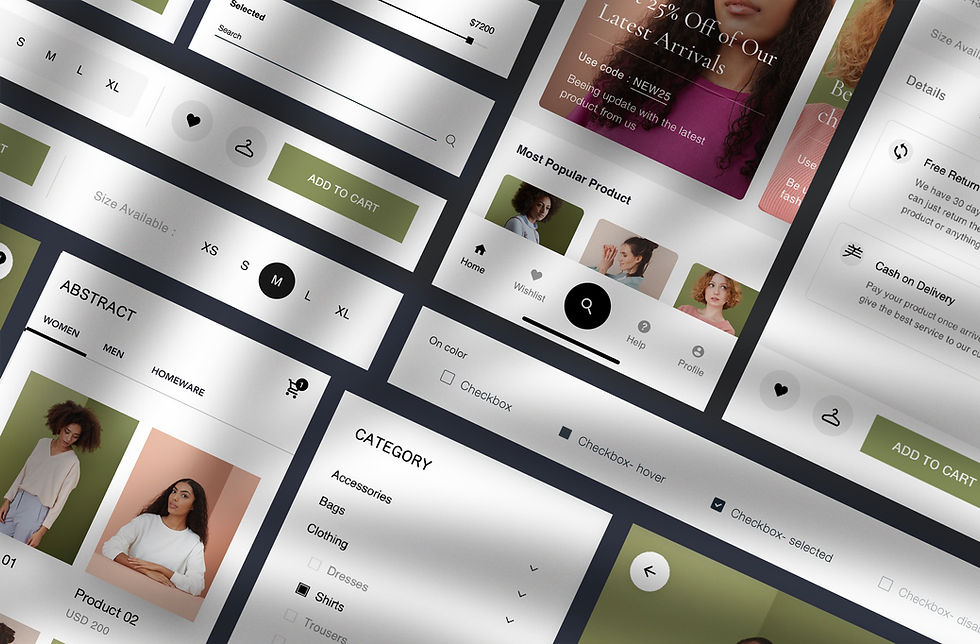How to start a new clothing brand- Launch a successful fashion label
- Nitish Kumar
- Dec 22, 2021
- 4 min read
Updated: Dec 15, 2023
So, you're trying to figure out how to start a clothing brand of your own. It's an excellent question and one that should be taken seriously. It is not difficult to start a clothing line if one understands the fundamentals of the process.

"The most challenging part of starting your own business is actually gaining the confidence and self-assurance that you can and should start it."
For a visionary creative entrepreneur, starting a clothing line may be a very gratifying experience. Whether you want to start with a simple line of printed garments or an extensive cut and sew collection with a variety of items and seasonal updates, is completely up to you. Depending on the type of clothing line you wish to start, the procedure will most likely include a number of different processes. The more hands-on you want to be with your line's sourcing and production, the more time, effort, and money you'll have to put in. There are also possibilities if you just want to get started on something quick and uncomplicated.
1. Decide your niche:
Starting a clothing business is a very personal journey. It's possible that you've identified a market gap or have a one-of-a-kind design in mind for a specific target segment. Perhaps you have a certain style in mind for your clothing line design-focused children's products, or menswear that pays homage to your own unique heritage or a collection focused on Gym wear? It could also be a clothing company that was created in response to a specific need or ethos, such as cruelty-free apparel.
Be aware of your speciality and keep it in mind. Even if you later stretch out and create a variety of additional designs, your original concept provides you with a legacy, a guiding principle, and a cause to be recognised.

2. Build your budget or business plan:
You may not need a full-fledged business plan to get started if this is truly a shoestring idea and you're testing your designs on a tiny scale. However, bear in mind that if your idea takes off, you'll want to scale up quickly, so even a preliminary strategy should be kept in the background.
This will serve as a roadmap for the rest of your career as a fashion designer and garment producer. Consider the following question: What is my ultimate goal for this product? Do I want to be a well-known brand? Do I want to start my own private label for a retailer like Target or H&M? Do I want to launch a high-end line that will be offered in a boutique on Melrose Avenue in Los Angeles or SoHo in New York City? Determine your aim and keep it in mind while you develop your brand.

3. Start Designing:
Assuming that this is your strong suit, now is your moment to shine creatively. The first collection you release to the public will say a lot about your brand. Simultaneously, consider the practical. Whatever you create will have to be produced at a reasonable price. Being a successful fashion business necessitates a balance of the ideal and the realistic.

4. Find a clothing manufacturer:
You'll need a manufacturing partner unless you plan to source, cut, and sew all of your materials yourself. This can refer to a variety of things. Maybe you're looking for a cloth vendor. Perhaps you're seeking a fully operational factory that can produce a small number of boutique items alongside mass-produced items from a well-known brand. Clothing production has been headquartered outside of the United States for decades. As a result, it's very likely that your search for a manufacturer will bring you to India, China, Vietnam, Sri Lanka, or Bangladesh. Although you may wish to visit the manufacturer in person, novice designers and entrepreneurs on a budget can conduct their entire vetting procedure over the phone and over email.
5. Create a brand identity:
You're probably a creative person if you work in fashion or clothing. And this will help you build a brand for your new apparel business. Read on for some helpful hints on how to build a brand that works for your company.
Choose a brand name that will appeal to your target market. For example, you might choose a brand name like Fish & Kids based on the age of your target audience. You might even use your own name as the name of your brand if your store sells your own original creations (just like Tommy Hilfiger and Hugo Boss).

6. Take it to Market:
You've put your product through its paces, it's selling well, and you're ready to order your first complete run. It's time to get serious about selling your product, and you'll need to make a few choices before packing up that first item. Take some time to think about how you'll:
Price your products and promote your brand
Create your website and social media presence
Organize any special offers or promotions that may be available.
Prepare your products for packaging.
Deliver your orders
Resolving any consumer complaints or refunds
Prepare ahead of time with your manufacturer for new seasons and peak times.
Maintain stock levels and ensure that the ordering process runs well.
NoName has helped several fashion designers, entrepreneurs in starting their own garment collections. If you are looking for a clothing manufacturer for your brand or upcoming brand, do get in touch. Contact Us











Comments